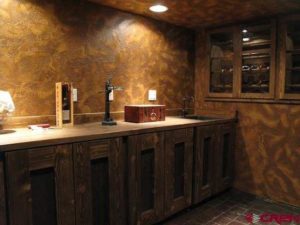
In the famous Jodie Foster thriller, it was called a “panic room,†but hidden rooms, constructed for the safety of your family during a remodeling or renovation, are most often called “safe roomsâ€. These rooms are constructed to give you and your loved ones a place to hide during a home intrusion, burglary or even extreme weather when they double as a storm shelter.
Some of them are in plain sight, some are built into a foundation, and some are concealed behind bookshelves, staircases, or fireplaces. Most include communication equipment so you can call the police after you barricade yourself inside.
The locations of safe rooms are often kept secret until after remodeling or renovation is completed, so choosing a remodeling company who can be trusted to exercise discretion, like Cornerstone Builders, is important.
Safe rooms are usually ground-floor closets or bathrooms constructed or converted during a remodeling, whose foundations have been reinforced with steel and concrete. Most builders of modern safe rooms rely on lightweight Kevlar and plastics, allowing them to more easily build safe rooms on second floors — off of the master bedroom, for instance. However, the ground floor is still the safest place for protection against natural catastrophes like hurricanes.
Not all safe rooms are meant for people either; many are built to protect things. You can use the room to hide your art work, jewelry, collections or computer hide drives in a climate-controlled environment.
A safe room is a box with an opening. So all six sides of the box — walls, ceiling and floor — must be fortified. You can reinforce a closet with plywood if you want a storm shelter, but it won’t provide protection from invaders. The next step up is chicken wire or steel mesh, and blast proof Kevlar panels provide the ultimate protection. A cement-reinforced foundation can provide a stable base, and a steel door offers security.
The door is the one weak point of the fortified box, so its reinforcements are critical. Even if your walls aren’t reinforced with steel, you might want to splurge on a solid steel door. Mortise locks, which are built into rather than attached to the door, provide another level of security, as do steel hinges and bolts. Steel doorjambs make it impossible for an intruder to kick in the door. High-end safe rooms often have keypad-controlled electromagnetic locks, which use magnetic forces to maintain the bond between a frame-mounted magnet and door-mounted hardware. Keys are not used as they can be lost or found by the wrong person. Instead, safe rooms rely on combination keypads, retinal or fingerprint scanning and interior deadbolts. Install a keyless Grade-1 deadbolt. The American National Standards Institute tests all locks with an arsenal of tools, and then grades the lock: Grade 1 is the best and toughest.
Safe rooms are designed to hide their occupants, so one of the best defenses is the invisible entrance. Bookcase entries and hidden pocket doors are popular choices.
Communication is important. If you can’t use a cell phone in the room, a buried phone line or alarm connected directly to the police or fire services is vital. A battery powered ham radio is useful too. Ask your remodeler to make the room soundproof as well, so intruders can’t listen in to your conversation.
You will want surveillance with at least one monitor connected to a number of hidden cameras. You may want to use heat-sensing cameras, so if the room is attacked at night, you can see, covertly, who is in the house.
You will want to have a generator installed and be careful of ventilation (and carbon monoxide poisoning) and battery powered lights and hand-cranked phones might act as a backup. Dummy vents can throw off invaders and you may want to include air-filtration systems and oxygen masks for every resident.
Your safe room may include a full bath or at least separate plumbing and a septic tank (or just a chemical toilet) and then you must have shelving and room for supplies. The US Department of Justice recommends you stock the room with:
- A safe water supply (a gallon per person per day is a general guideline)
- Nonperishable food
- First aid kit with necessary medications
- Flashlights and extra batteries
- Battery-powered radio and extra batteries
- Clothes
- Sanitation supplies
- Important documents
- Extra pair of glasses
- Blankets
- Credit cards and cash
- A roll of duct tape
- Potassium-iodine tablets (to prevent radiation sickness). If you’re worried about safety from intruders, most experts say the room needs to hold out long enough for the police to arrive, usually 30 minutes to a couple of hours.
Cornerstone Builders is happy to consult with you about remodeling or renovating your property to include a safe room—whether a simple or elaborate one—and will work with your security team to offer our own expertise. Please call us today to help make your family more secure.

